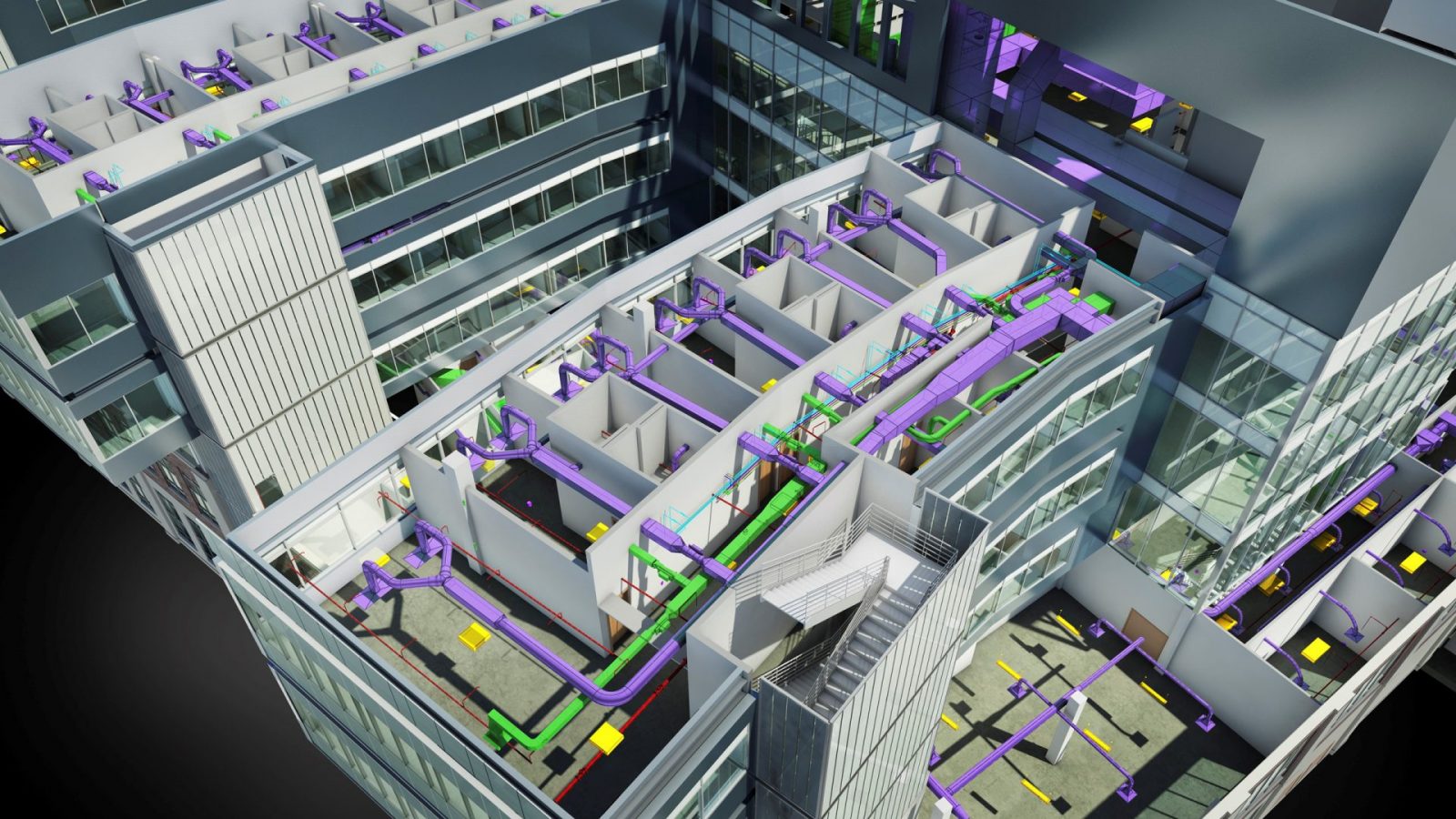
BIM

About This Project
Our practice has adopted BIM technology since its inception, embracing the benefits of early design integration, coordination and collaboration with all members of the project team. Our projects involve close, integrated teamwork with major engineering and construction management firms across the globe.
Collaboration with clients, consultants and suppliers is central to our working methodology and allows us to work at various scales, in several sectors, and with different disciplines. Early 3D design and validation is used to assist coordination and facilitate clash detection – identifying critical interface issues before construction, and minimising the risks associated with redesign and over-estimating cost.
We use the latest industry-standard software solutions – including Revit, Rhino and Grasshopper, 3DSMax, Navisworks and Ecotect – to develop culturally and climatically responsive architecture that inspires.
MODEL AUTHORING
BIM is a process, not just a model. From the earliest sketches, through to simulation and specifications, onto construction drawings and facility management, all parts of our integrated and collaborative design process is part of a cohesive workflow that brings together the best possible minds to solve complex problems.
SPACE PROGRAMMING
From the first stages of a project, we develop a BIM database of building spaces that becomes an essential tool for scoping out the project and establishing the brief. This database is continuously updated throughout to capture room requirements and technical data.
Using BIM, we quickly develop and evaluates multiple options for space planning. Adjacencies and efficiencies can be quickly tested, and GFA schedules are live-linked to the model geometry. This creates a highly coordinated system where all project members are sharing the same room data.
DESIGN REVIEW (CLASH DETECTION)
BIM makes coordination part of an integrated and collaborative design process that reduces clashes and prevents significant re-working.
We employ BIM databases as the forum to coordinate designs and express design intent across all disciplines simultaneously. Through rigorous coordination protocols, weekly design team meetings, an open culture of problem-solving, we lead the design team in the early detection and solution of uncoordinated designs.
PHASE PLANNING 4D
Complex projects demand sophisticated delivery for cost and schedule certainty. We employ fully-phased BIM data to work through the design and delivery of its projects.
On projects as complex as World Cup Stadia, there can be many operational modes and the buildings might undergo dramatic transformations over their lifetime. We embed phasing and scheduling data into our models to ensure such transformations are quantified, scheduled, and easily understood across the design team.
COST ESTIMATION 5D
Our BIM data provides a common platform on which designers and cost consultants work together to deliver project value. Merging cost data with continuously updated geometry in the BIM environment produces accurate cost models that give clients cost certainty.
We employ a variety of tools within its BIM environment to assess feasibility, optimise designs for cost efficiency, establish the costs of complex projects, and reduce client risk. Through detailed modelling, we eliminate many unknowns that contractors traditionally must price for, thereby driving savings in complex tenders.
ASSET & FM 6D
In facility management, good data is essential. We routinely update its BIM standards to match the industry’s most stringent requirements in this fast-changing sector in BIM delivery.
We work closely with its design team to ensure complete facility management information is included in the model, including specifications, warranty data, life-cycle assessments and performance requirements. We can deliver full CoBie-ready BIM data for the most complex projects.
DIGITAL FABRICATION
Our data-driven design workflows mean 3D databases are used from the outset of the project as we build upon these. This allows us to develop our working models with high levels of accuracy making these essentials for building directly from them, improving reliability and reducing manufacturing cost.
In order to efficiently deliver our designs, on time and on budget, we bring complexity to simple assemblies. Thanks to this, we are able to propose solutions that are fit for its environment and can adapt to the unique conditions of each one the sites we work on.
SUSTAINABILITY
From the earliest stages of our projects, we use climatic and contextual data to inform sustainable designs. We use BIM to evaluate design options and simulate building performance.
Ensuring sustainable design requires rigorous testing of multiple options.
VISUALISATION
We use BIM to bring clients into the iterative process of design. Through 3D visualisations, we test and verify our designs continuously throughout every project.
We model all our projects in 3D from the earliest stages, creating a seamless workflow between design and visualisations.
Our integrated workflow ensures high quality and accurate visualisations that give our Clients confidence in the design.
RISK AVOIDANCE
BIM allows us to identify and eliminate risks early on, through coordinated design. The accuracy, scheduling and phasing of our BIM data provide cost and schedule certainty to our clients. We at the forefront of integrating health and safety information into the BIM model. Risks from the Designers’ Hazard Register are given 3D representations that appear in all views and coordination models. Our bespoke-written software schedules these risks on the construction drawings, ensuring the contractors on-site have up-to-date information.

